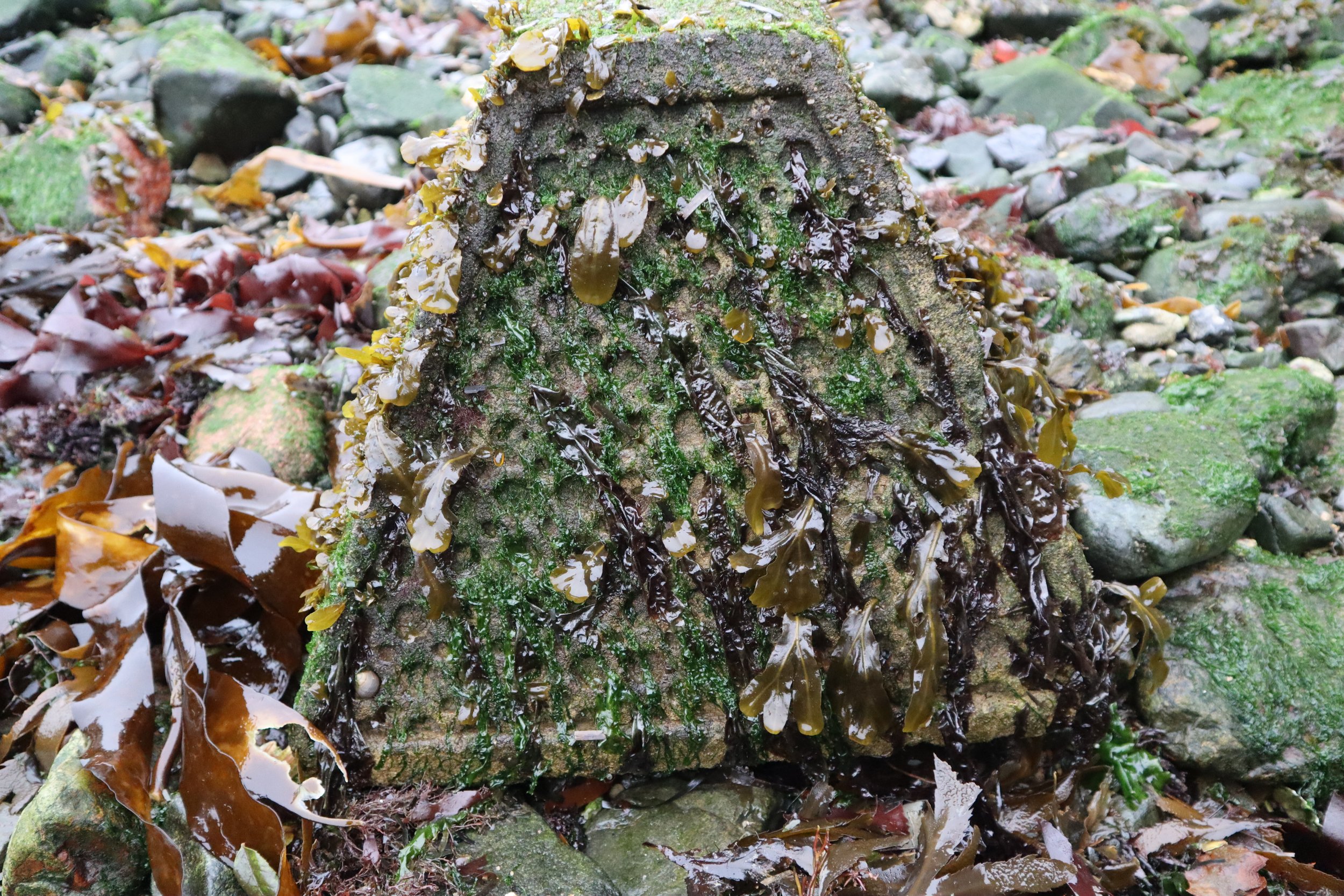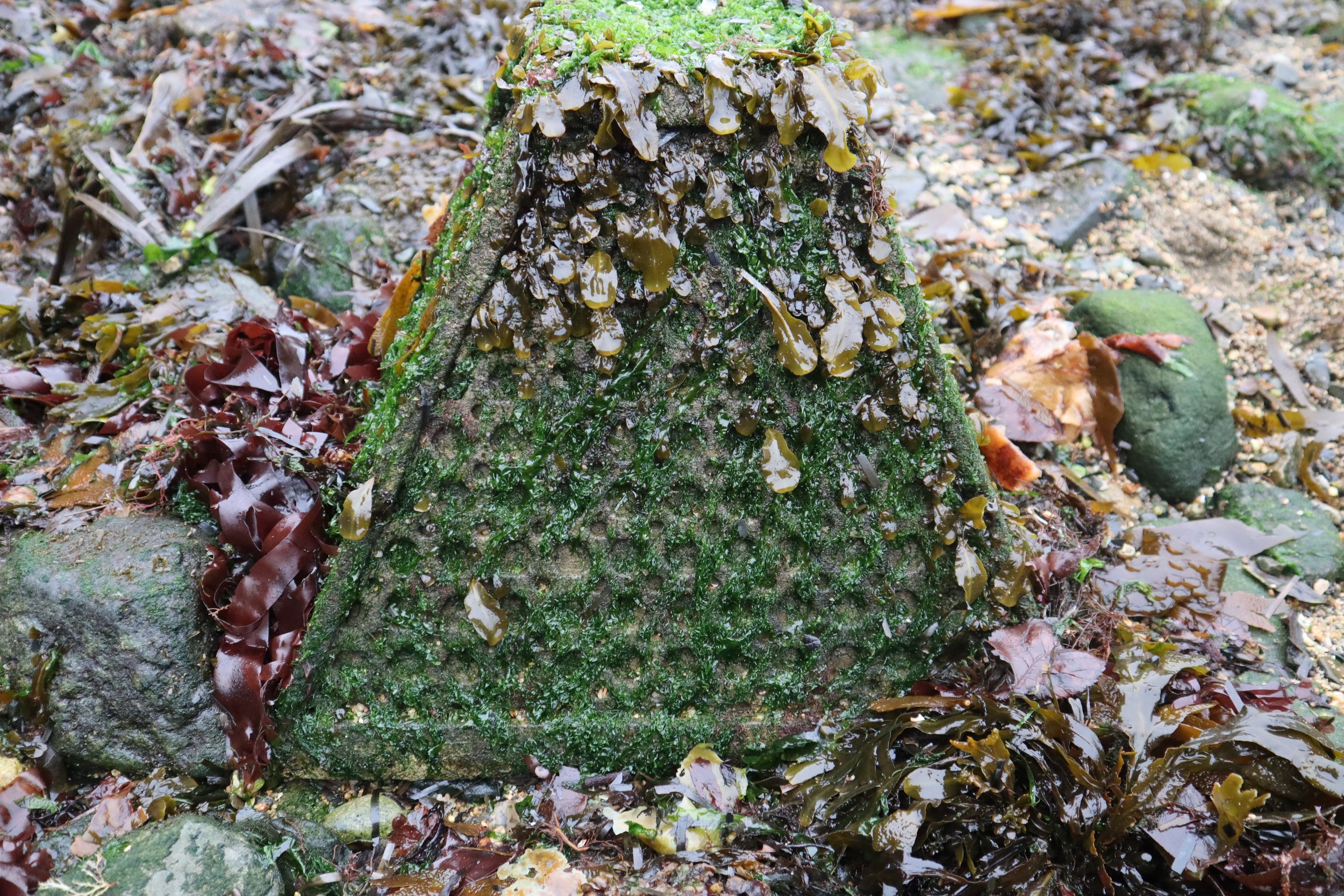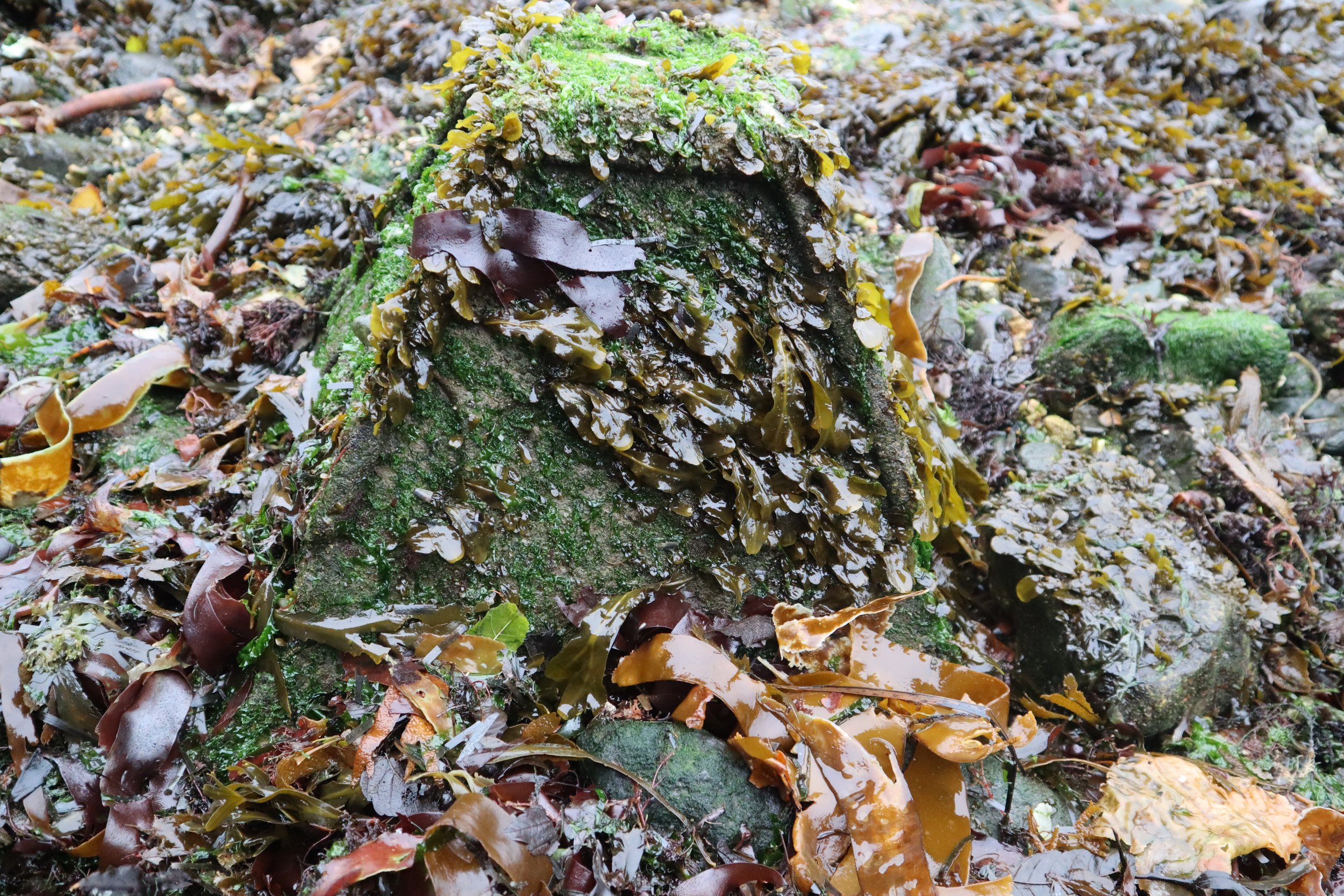Autumn 2021 Monitoring
This month Exo have been collecting and studying the results of two of our GeoBlock® trials with the Environment Agency in Newlyn, Cornwall and Moverons, Essex.
These trials involved the deployment of numerous Eco rock armour units to study their colonisation rates and biodiversity when compared to traditional rock armour. They provide crucial intertidal habitats to offset the effects of coastal squeeze and rising sea levels.
Autumn is the perfect time to study peak colonisation, which established over spring and summer, as floral growth and faunal breeding has stopped but much of the growth is still in place before winter mortality sets in.
Our Newlyn trial in Cornwall forms part of the Interreg funded SARCC (Sustainable And Resilient Coastal Cities) project, to study effectiveness of Nature based solutions (NBS) for coastal defence. This involved deployment of 12 Eco rock armour blocks. These blocks will be studied and monitored from Autumn 2020 to Autumn 2022 to determine their ability to function as erosion control blocks and to study how their unique heterogeneous surface textures, incorporated into the design, aids bio colonisation.
One year since deployment, and colonisation of first pioneer floral biofilms and later higher trophic organisms is well underway. Species present include Enteromorpha filamentous algae, Periwinkles (Littorina saxatalis) and Bladder wrack sea-weed (Fucus vesiculosus).
The 32 Eco rock armour units at Moverons farm, in Essex, show similar colonisation rates and diversity seen in Cornwall, with larger populations of gastropod colonies (periwinkles) and presence of barnacles (Chthamalus stellatus) on all blocks. In comparison to adjacent homogenous rock armour the contrast in diversity is stark, with only filamentous Enteromorpha present on these traditional erosion control units, with a dearth of higher trophic organisms, including sessile arthropods and mobile gastropods.
The monitoring has shown that our GeoBlock® and Greening the Grey® technology offers a suitable combination to act as diversity enhancing habitats for intertidal marine species when compared to bare and homogenous rock. The blocks have also shown that their ability for erosion control is likely to be used as a capping layer alongside traditional units, to form a green barrier to further protect the coastline and act as crucial products in the energy dampening process.
Overall, the results from our trials are promising in offering solutions to the drastic biodiversity decline we have seen in our oceans and for coastal defence against flooding and mitigating effects of anthropogenic induced climate change.
For more updates follow our twitter account at https://twitter.com/exo_env and be sure to continue checking up on our blog and geoblock website for more interesting stories like this https://exo-env.co.uk/, geoblock.eu.





